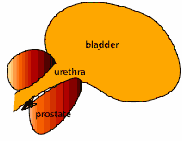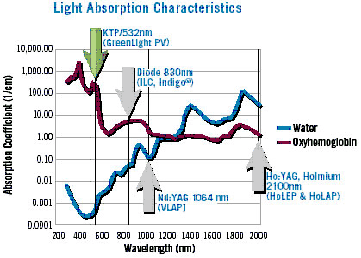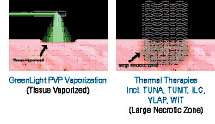benign prostatic hyperplasia (BPH)
PVP Greenlight Laser, a treatment option for BPH.
11/04/2009 – Todd D. Brandt, Metro Urology, 9-28-04
Benign Prostatic Hyperplasia (BPH) is common problem for men, and almost all men will have growth of the prostate as they age. Many men will have symptoms related to that growth, and up to 20 percent of men will need treatment. The standard treatment was to remove tissue using a scope, but required a hospital stay and 3-6 weeks of recovery. The PVP Greenlight laser is a new treatment to remove the obstructing prostate tissue while decreasing the potential risks of traditional surgery.
Ticketsindianapolis.org has info about Tickets in Indianapolis, IN for Jason Isbell, Avant, Trey Anastasio Band, Emblem3 at Indianapolis Tickets in Eight Seconds Saloon, and Murat Theatre at Old National Centre.
The prostate is a walnut-sized gland that wraps around the urethra. As the prostate grows the enlarged tissue (BPH) will obstruct the flow of urine by squeezing on the urethra, increasing the resistance to the flow of urine. Symptoms of BPH include: slow or interrupted stream, getting up at night, having to void more frequently or urgently, hesitancy in initiating a stream, incomplete emptying, dribbling urine at the end of a void.
of urine by squeezing on the urethra, increasing the resistance to the flow of urine. Symptoms of BPH include: slow or interrupted stream, getting up at night, having to void more frequently or urgently, hesitancy in initiating a stream, incomplete emptying, dribbling urine at the end of a void.
Traditional surgical treatment involves removing the obstructing tissue with either a resection (TURP) or an open incision (Suprapubic Prostatectomy). TURP is considered the gold-standard treatment. We now have procedures that can be done in the office-radio frequency or microwave-that destroy the tissue by heating the tissue and causing it to shrink over time. The office-based procedures will benefit some men, but they lack the profound improvement in urine flow afforded by a TURP and their effect may not last as long.
The PVP Greenlight Laser enhances our ability to treat BPH by opening the urethral channel with much less bleeding. The laser removes the tissue by vaporization. Additionally, the laser coagulates the blood vessels during the procedure because the laser light is absorbed by red blood cells; the procedure is almost bloodless.
the tissue by vaporization. Additionally, the laser coagulates the blood vessels during the procedure because the laser light is absorbed by red blood cells; the procedure is almost bloodless.
 The absorbed light coagulates and destroys tissue at the surface of the tissue. The effect is different than traditional thermal energy (cautery), which damages tissue well below the surface of the contacted tissue. The result is less irritation and burning during urination after the procedure.
The absorbed light coagulates and destroys tissue at the surface of the tissue. The effect is different than traditional thermal energy (cautery), which damages tissue well below the surface of the contacted tissue. The result is less irritation and burning during urination after the procedure.
The PVP laser decreases the hospitalization and catheterization times as well. Because there is less bleeding, the catheter can be removed the day after surgery. Some physicians are doing this procedure as outpatient, and other physicians are electing to do the procedure while patients are on coumadin or warfarin.
Patient selection is important, and your surgeon will help you decide if this procedure will work for you. Men with smaller prostates will have the best chance of reaping all of the potential benefits from this procedure. Larger prostates can be done as well, but most often will require longer anesthetic times and a potentially increased risk of complications during the procedure.
If there is unexpected bleeding during the procedure it is possible that the procedure will need to be stopped and a more standard TURP may need to be performed. These older procedures are very safe, but may require you to stay in the hospital an extra day or two.
Complications can occur: infection, bleeding, burning with urination, transient inability to empty the bladder, need for catheter for a few days, and, very rarely, injury to the bladder or penis.
Again, your surgeon will help you decide if this procedure will be right for you. Although we believe the procedure is a good option for most men, other effective treatments exist and may be better in your particular case.
